Exhibition dates: 18th July – 1st December 2019, posted December 2020
Curators: Julia Tatiana Bailey (NGP), Catherine Grenier (Fondation Giacometti), Serena Bucalo-Mussely (Fondation Giacometti)
Installation view of the entrance to the exhibition Alberto Giacometti at the Trade Fair Palace, National Gallery Prague
Photo: Marcus Bunyan
The last posting for this year. What an excellent way to finish off what has been an incredibly long, stressful and tragic time. I am thinking of all my readers and sending them good energies for the year ahead. I saw this exhibition during my European sojourn last September… it seems a long time ago now.
The revelations
The beauty, darkness and intensity of Giacometti’s paintings. Most unexpected.
The fecundity, malleability and darkness of his busts of men.
The highlight
The large Walking Man I (1960)
The disappointment
That there was only one Walking Man in the exhibition (Giacometti cast six numbered editions plus four artist proofs). I wanted to see a whole forest of them!
What a privilege to see this exhibition.
Dr Marcus Bunyan
All iPhone images © Marcus Bunyan. Please click on the photographs for a larger version of the image.
“In my finished work I find transformed and relocated images, impressions, events that deeply affected me (often without me realising it), forms that are very close to me, even if I am often not able to name them, which makes them even more mysterious.”
Alberto Giacometti
The retrospective presents the works by one of the major 20th-century artists, sculptor and painter Alberto Giacometti (1901-1966) for the first time in the Czech milieu.
His main theme was the human figure. He became well-known for compelling elongated figures done after World War II, but no less important are his artworks from the interwar period, when he was a key member of the Paris avant-garde. The National Gallery Prague prepares this exhibition in cooperation with the Paris-based Fondation Giacometti, which administers the estate of Annette and Alberto Giacometti. The selection of the exhibits from its collections, which is shown in the Trade Fair Palace, includes more than one hundred sculptures (including rare originals of plaster), paintings and drawings from all Giacometti’s creative periods, from the 1920s to 1960s.
Installation views of the opening of the exhibition Alberto Giacometti at the Trade Fair Palace, National Gallery Prague
Photos: Marcus Bunyan
A family of artists
Installation views of the exhibition Alberto Giacometti at the Trade Fair Palace, National Gallery Prague
Photos: Marcus Bunyan
Alberto Giacometti (Swiss, 1901-1966)
Large Head of Mother (installation view)
1925
Plaster
Fondation Giacometti, Paris
Photo: Marcus Bunyan
Alberto Giacometti (Swiss, 1901-1966)
Head of Father (Round II) (installation view)
1927-1930
Plaster
Fondation Giacometti, Paris
Photo: Marcus Bunyan
For the very first time in the Czech Republic, the National Gallery Prague presents the work of one of the most important, influential and beloved artists of the 20th century, the sculptor and painter Alberto Giacometti (1901-1966).
This extensive retrospective exhibition maps Giacometti’s artistic development across five decades. It follows its course from the artist’s early years in the Swiss town of Stampa, through his avant-garde experiments in inter-war Paris and up to its culmination in the unique manner of figural representation for which the artist is known best. His impressive elongated figures, which Giacometti created after World War II and which carry a sense of existential urgency, reflect his sense for the fragility and vulnerability of the human being.
Thanks to a joint collaboration with the Fondation Giacometti in Paris, who administers the estate of Annette and Alberto Giacometti, we are able to present over one hundred sculptures, including a series of valuable plaster statuettes, to the Czech audience. The exhibition will also feature several of Giacometti’s key paintings and drawings that testify to the breadth of his technical ability and thematic ambit,” says Julia Bailey, the exhibition’s curator from the NGP’s Collection of Modern and Contemporary Art. The exhibition at the Trade Fair Palace will feature such notable examples of Giacometti’s works as Walking Man, Standing Woman or his Women of Venice, which intrigued audiences at the famous Italian Biennale in 1956, as well as several other of his iconic works such as Spoon Woman, Woman with Chariot, Nose and valuable miniature plaster sculptures, intimate portraits of the artist’s family and friends who have been Giacometti’s favourite models all life long.
Giacometti, whom Jean-Paul Sartre described as one of the most important existential artists, refused strictly realistic representation because he perceived an insurmountable abyss between reality and art. “The originality of Giacometti’s work lies in the fact that it is situated on the very edge of this chasm. He internalised his earlier struggle with representation to such an extent that it became a motive force for his art,” explains Catherine Grenier, director of the Fondation Giacometti, President of the Giacometti Institute, and co-curator of the show.
The exhibition Alberto Giacometti, prepared by the National Gallery in collaboration with the Fondation Giacometti in Paris, will open on 18 July 2019 on the first floor of the Trade Fair Palace and run until 1 December 2019. It will be complemented by a rich accompanying programme as well as a companion volume.
Press release from the National Gallery Prague
Installation view of the exhibition Alberto Giacometti at the Trade Fair Palace, National Gallery Prague
Photo: Marcus Bunyan
Alberto Giacometti (Swiss, 1901-1966)
Gazing Head (installation view)
1929
Plaster
Fondation Giacometti, Paris
Photo: Marcus Bunyan
Installation view of the exhibition Alberto Giacometti at the Trade Fair Palace, National Gallery Prague showing at centre, Suspended Ball 1930-1931
Photo: Marcus Bunyan
Alberto Giacometti (Swiss, 1901-1966)
Suspended Ball (installation view)
1930-1931
Plaster, metal and string
Fondation Giacometti, Paris
Photo: Marcus Bunyan
In the magazine Le Surréalisme au service de la Révolution, Salvador Dalí presented this work as the prototype “object with a symbolic function”. The potential swinging of the ball on the crescent simultaneously suggests the softness of a caress and the violence of an incision. The erotic dimension is obvious, reinforced by the idea of movement. It is the first example of Giacometti’s “cage” works.
Installation view of the exhibition Alberto Giacometti at the Trade Fair Palace, National Gallery Prague showing at left in the top photograph, Cubist figures / couples, and at right in the bottom photograph, Pocket-Tray 1930-1931
Photo: Marcus Bunyan
Alberto Giacometti (Swiss, 1901-1966)
Pocket-Tray (installation view)
1930-1931
Painted plaster
Fondation Giacometti, Paris
Photo: Marcus Bunyan
Left
Alberto Giacometti (Swiss, 1901-1966)
Cubist Figure I (installation view)
c. 1926
Plaster
Fondation Giacometti, Paris
Right
Alberto Giacometti (Swiss, 1901-1966)
The Couple (installation view)
1926
Plaster
Fondation Giacometti, Paris
Photo: Marcus Bunyan
Left
Alberto Giacometti (Swiss, 1901-1966)
Composition (known as Cubist I, Couple) (installation view)
1926-1927
Plaster
Fondation Giacometti, Paris
Right
Alberto Giacometti (Swiss, 1901-1966)
Composition (known as Cubist II, Couple) (installation view)
c. 1927
Plaster
Fondation Giacometti, Paris
Photo: Marcus Bunyan
For the first time in history the Trade Fair Palace presented to Czech visitors the work of one of the most important, most influential and also most popular 20th century artists. Alberto Giacometti was not only a sculptor, but also a painter. The exhibition offered a new interpretation of Giacometti’s work focused on the human figure. The works, which had not yet been exhibited or are not exhibited often, included iconic pieces from each period of his career. More than 170 statues, pictures and graphics were on display. The retrospective exhibition was divided into nine chronological, topical units. They mapped Giacometti’s journey through the decades, from growing up in Stampa, Switzerland, to avant-garde experiments in interwar Paris and the climax in his unique displaying of the body. It is the impressive, existential figures that he created during the Second World War and that reflect the author’s feeling for the fragility and vulnerability of a human being that made the artist most famous. The individual groups included a whole number of large photographs with Giacometti, the exhibition also contained a video in which the artist spoke of his work and an interactive studio. The cherry on top was, at the end of the exhibition, the bronze Walking Man from 1960. The statue was placed against a white background, so the dark silhouette stood out, and illuminated so that it cast several shadows. This gave rise to a multiform image of one item.
Anonymous text from the Lexxus Norton website 20th September 2019 [Online] Cited 19/12/2020
Installation view of the exhibition Alberto Giacometti at the Trade Fair Palace, National Gallery Prague showing at left Very Small Figurine (1937-1939), and at right Woman with Chariot (1943-1945)
Photo: Marcus Bunyan
Tiny sculptures
During the war, Giacometti left for Geneva and produced tiny works in a hotel room that he transformed into his studio. Those motifs in miniature were placed on pedestals integrated into the sculpture, for which he experimented with variations in form and size.
He worked from memory on figures seen from afar, in an attempt to sculpt “the distance”. The Very Small Figurine in plaster [at left in the above photograph] was made from memory of Isabel Delmer in the distance on a Parisian boulevard. It barely measures a few centimetres but it is as monumental as Woman with Chariot, the only piece Giacometti sculpted in a large dimension during the war [at right in the above photograph].
Alberto Giacometti (Swiss, 1901-1966)
Woman with Chariot (installation view detail)
1943-1945
Plaster and wood
Fondation Giacometti, Paris
Photo: Marcus Bunyan
Alberto Giacometti (Swiss, 1901-1966)
Tall Woman Seated (installation view)
1958
Bronze
Fondation Giacometti, Paris
Photo: Marcus Bunyan
Left
Alberto Giacometti (Swiss, 1901-1966)
Bust of Annette X (installation view)
1965
Plaster
Fondation Giacometti, Paris
Right
Alberto Giacometti (Swiss, 1901-1966)
Bust of Annette, Venice (installation view)
1962
Plaster
Fondation Giacometti, Paris
Photo: Marcus Bunyan
Annette Arm met Giacometti in Genova in 1943, and became his wife in 1949. She was to be one of Alberto’s favourite models. The representations of Annette evolved throughout the years and transformed in line with the artist’s state of mind and according to his vision of the moment. Annette’s attitude is often solemn, her eyes fixed in front of her. For Giacometti the gaze was the absolute sign of life: “When I manage to capture the expression in the eyes, everything else follows.”
Installation view of the exhibition Alberto Giacometti at the Trade Fair Palace, National Gallery Prague
Photo: Marcus Bunyan
Alberto Giacometti (Swiss, 1901-1966)
Bust of a Man (known as New York I) (installation view)
1965
Bronze
Fondation Giacometti, Paris
Photo: Marcus Bunyan
Alberto Giacometti (Swiss, 1901-1966)
Bust of a Man (known as New York II) (installation view)
1965
Bronze
Fondation Giacometti, Paris
Photo: Marcus Bunyan
Alberto Giacometti (Swiss, 1901-1966)
Bust of Diego (installation view)
1962
Bronze
Fondation Giacometti, Paris
Photo: Marcus Bunyan
Alberto Giacometti (Swiss, 1901-1966)
Bust of a Man (installation view)
1956
Bronze
Fondation Giacometti, Paris
Photo: Marcus Bunyan
Installation view of the exhibition Alberto Giacometti at the Trade Fair Palace, National Gallery Prague showing Tall Thin Head 1954
Photo: Marcus Bunyan
Alberto Giacometti (Swiss, 1901-1966)
Tall Thin Head (installation views)
1954
Bronze
Fondation Giacometti, Paris
Photos: Marcus Bunyan
This bust of Diego gathers two very different views into a single one. Worked with the “blade of a knife”, the facial features are aligned according to a slightly askew axis, with the extreme narrowness provoking the sensation of disappearing into space. Seen in profile, the compact form defines the craggy contours of the nose, the half open mouth and the chin, all dominated by a skull stretched upwards.
Installation view of the exhibition Alberto Giacometti at the Trade Fair Palace, National Gallery Prague showing some of his paintings
Photo: Marcus Bunyan
Installation view of the exhibition Alberto Giacometti at the Trade Fair Palace, National Gallery Prague showing at right centre, The Cage 1950-1951 (bronze, Fondation Giacometti, Paris)
Photo: Marcus Bunyan
The Cage, 1950-1951
Between 1949 and 1951, Giacometti went back to the device of the cage invented for Suspended Ball. The legs raise to a certain height the table on which the figures are presented: two characters, arranged on a board, a spindly woman, and a male character, reduced to a bust directly placed on the floor. The cage is used to define the space and frame the scene.
Installation view of the exhibition Alberto Giacometti at the Trade Fair Palace, National Gallery Prague showing at centre left, Four Women on a Base 1950 (bronze, Fondation Giacometti, Paris)
Photo: Marcus Bunyan
Alberto Giacometti (Swiss, 1901-1966)
Four Women on a Base (installation view)
1950
Bronze
Fondation Giacometti, Paris
Photo: Marcus Bunyan
Installation views of the exhibition Alberto Giacometti at the Trade Fair Palace, National Gallery Prague showing Women of Venice 1956 (plaster and painted plaster, Fondation Giacometti, Paris)
Photos: Marcus Bunyan
Women of Venice, 1956
The Women of Venice owe their name to the Venice Biennale, where six plaster sculptures from the series were exhibited in 1956. Giacometti made nudes in clay, which were cast by his brother Diego as he proceeded. The plaster pieces were then reworked with a knife and enhanced with paint. The aspect of the women owes a lot to the use of soft clay imprinted with the marks of the artist’s fingers.
Installation view of the exhibition Alberto Giacometti at the Trade Fair Palace, National Gallery Prague with The Glade 1950 in the foreground with Women of Venice 1956 in the background
Photo: Marcus Bunyan
Alberto Giacometti (Swiss, 1901-1966)
The Glade (installation view)
1950
Bronze
Fondation Giacometti, Paris
Photo: Marcus Bunyan
Alberto Giacometti (Swiss, 1901-1966)
The Forest (installation view)
1950
Bronze
Fondation Giacometti, Paris
Photo: Marcus Bunyan
The Forest, 1950
Giacometti said that one day he place some figures on the floor of the studio to make room on his worktable. Chance organised them in positions that he kept and then rear-arranged in two separate works, The Glade and The Forest. This sculpture reminded him of a place in the forest visited during childhood, where trees made him think of characters talking to one another, immobilised in the act of walking.
Making a portrait
Installation views of the exhibition Alberto Giacometti at the Trade Fair Palace, National Gallery Prague showing in the bottom image at second left Isaku Yanaihara 1956-1957, and at right Yanaihara in Profile 1956
Photos: Marcus Bunyan
Alberto Giacometti (Swiss, 1901-1966)
Isaku Yanaihara (installation view)
1956-1957
Oil on canvas
Fondation Giacometti, Paris
Photo: Marcus Bunyan
Professor of Philosophy at the University of Osaka in Japan, Isaku Yanaihara met Giacometti in 1955 at an interview. Fascinated by his face, the artist made him one of his main models. The philosophy returned almost every summer between 1956 and 1961 to sit for two sculpted busts, twenty or so painted portraits and numerous drawn portraits.
Alberto Giacometti (Swiss, 1901-1966)
Yanaihara in Profile (installation view)
1956
Oil on canvas
Fondation Giacometti, Paris
Photo: Marcus Bunyan
Alberto Giacometti (Swiss, 1901-1966)
Alberto Giacometti (10 October 1901 – 11 January 1966) was a Swiss sculptor, painter, draftsman and printmaker. Beginning in 1922, he lived and worked mainly in Paris but regularly visited his hometown Borgonovo to see his family and work on his art.
Giacometti was one of the most important sculptors of the 20th century. His work was particularly influenced by artistic styles such as Cubism and Surrealism. Philosophical questions about the human condition, as well as existential and phenomenological debates played a significant role in his work. Around 1935 he gave up on his Surrealistic influences in order to pursue a more deepened analysis of figurative compositions. Giacometti wrote texts for periodicals and exhibition catalogues and recorded his thoughts and memories in notebooks and diaries. His self-critical nature led to great doubts about his work and his ability to do justice to his own artistic ideas but acted as a great motivating force.
Between 1938 and 1944 Giacometti’s sculptures had a maximum height of seven centimetres (2.75 inches). Their small size reflected the actual distance between the artist’s position and his model. In this context he self-critically stated: “But wanting to create from memory what I had seen, to my terror the sculptures became smaller and smaller”. After World War II, Giacometti created his most famous sculptures: his extremely tall and slender figurines. These sculptures were subject to his individual viewing experience – between an imaginary yet real, a tangible yet inaccessible space.
In Giacometti’s whole body of work, his painting constitutes only a small part. After 1957, however, his figurative paintings were equally as present as his sculptures. His almost monochromatic paintings of his late work do not refer to any other artistic styles of modernity.
Text from the Wikipedia website
Installation views of the exhibition Alberto Giacometti at the Trade Fair Palace, National Gallery Prague showing at left in the bottom photograph, Stele III 1958
Photos: Marcus Bunyan
Alberto Giacometti (Swiss, 1901-1966)
Stele III (installation view detail)
1958
Plaster
Fondation Giacometti, Paris
Photo: Marcus Bunyan
Alberto Giacometti (Swiss, 1901-1966)
The Nose (installation view)
1947
Bronze, painted metal and cotton string
Fondation Giacometti, Paris
Photo: Marcus Bunyan
This extraordinary head suspended in a void is the representation of a nightmare that deeply upset the artist following a traumatic experience in 1921. After witnessing the death of Pieter van Meurs, whom he had met while travelling, Giacometti became fascinated by the nose that appeared to be growing continually even after life had left his body. [See also the gaping mouth of the sculpture Head on a Rod 1947]
1921: At the beginning of the summer he travels yet again to Italy, and on the train he meets a mysterious man, an old Dutchman named Peter van Meurs, who would later contact Giacometti with an invitation to become his travel companion. Giacometti, hungry for adventure and wanting to avoid wasting time in school, which he resented, he was finally given permission by his parents, reluctantly, to embark on the adventure. He was only 19, years of age. However, as fate would have it, the adventure was cut short by the unexpected death of the old Dutchman.
The Death of van Meurs
The following story is told by James Lord in his excellent book: Giacometti, A Biography:
“Van Meurs was not handsome. He had thick fleshy features … If he was a homosexual there is no reason to assume he was an active or even conscious one. … The travellers set out on September 3, 1921 … they went to the Grand Hotel ds Alpes, built on the ruins of an ancient monastery.
The following day was Sunday. Rain was falling on the mountainsides, on the forest, and on the fields around the hotel. It was cold. Van Meurs awoke unwell and in sever pain. He suffered from kidney stones … The hotel luckily had a doctor attached to the staff. He was called, examined van Meurs, and gave him an injection to ease the pain.
Alberto remained by the bedside of the elderly Dutchman. Having brought with him a copy of Flaubert’s Bouvard et Pecuchet, he began to read the introductory essay by Guy de Maupassant. In it there is a passage which may have seemed striking to the impressionable young artist as he sat by the bed of this sick man whom he barley knew.
Speaking of Flaubert, Maupassant says:
“Those people who are altogether happy, strong and healthy: are they adequately prepared to understand, to penetrate, and to express this life we live, so tormented, so short? Are they made, the exuberant and outgoing, for the discovery of all those afflictions and all those sufferings which beset us, for the knowledge that death strikes without surcease, every day and everywhere, ferocious, blind, fatal? So it is possible, it is probable, that the first seizure of epilepsy made a deep mark of melancholy and fear upon the mind of this robust youth. It is probable that thereafter a kind of apprehension toward life remained with him, a manner somewhat more somber of considering things, a suspicion of outward events, a mistrust of apparent happiness.”
Outside the window, rain continued to fall … but [van Meurs] showed no sign of improving. On the contrary. His cheeks had become sunken, and he was barely breathing through his open mouth.
Alberto took paper and pencil and began to draw the sick man “to see him more clearly, to try to grasp and hold the sight before his eyes, to understand it, to make something permanent of the experience of the moment.” He drew the sunken cheeks, the open mouth, and the fleshy nose which even as he watched seemed bizarrely to be growing longer and longer. Then it suddenly occurred to him that van Meurs was going to die. All alone in that remote hotel, with rain pouring on the rocky mountaintops outside, Alberto was seized by blind fear.
Toward the end of the afternoon, the doctor returned and examined the sick man again. Taking Alberto aside, he said, “Its finished. The heart’s failing. Tonight he’ll be dead.”
Nightfall came. Hours passed. Peter van Meurs died.
In that instant everything changed for Alberto Giacometti forever. He said so, and never ceased saying so. The subsequent testimony of his lifetime showed that it was the truth. Till then he had had no idea, no inkling of what death was. He had never seen it. He had thought of life as possessing a force, a persistence, a permanence of its own, and of death as a fateful occurrence which might somehow enhance the solemnity, and even the value, of life. Now he had seen death. It had been present for an instant before his eyes with a power which reduced life to nothingness. He had witnessed the transition from being to non-being. Where there had formerly been a man, now there remained only refuse. What had once seemed valuable and solemn was now visibly absurd and trivial. He had seen that life is frail, uncertain, transitory.
In that instant, everything seemed as vulnerable as van Meurs. Everything was threatened in the essence of its being. From the most infinitesimal speck of matter to the great galaxies and the whole universe itself, everything was precious, perishable. Human survival above all appeared haphazard and preposterous.
James Lord then quotes Giacometti’s own words: … “For me it was an abominable trap. In a few hours van Meurs had become an object, nothing. Then death became possible at every moment for me, for everyone. It was like a warning. So much had come about by chance: the meeting, the train, the advertisement [placed by van Meurs in the newspaper]. As if everything had been prepared to make me witness this wretched end. My whole life certainly shifted in one stroke on that day. Everything became fragile for me.”
Alberto did not rest well that night. He did not dare go to sleep for fear he might never wake. He was so afraid of the dark, as if the extinction of light were the extinction of life, as if the loss of sight were the loss of everything. All night, he kept the light burning. [and every night of his life thereafter]. He shook himself repeatedly to try to stay awake. … Then suddenly it seemed to him in his half-sleep that his mouth was hanging open like the mouth of the dying man, and he started awake in terror.”
James Lord quoted in Steven D. Foster. “Homage to Giacometti Part 5: Regarding His Fear of Death,” on the Steven D. Foster – Photographs: The Departing Landscape website September 10, 2017 [Online] Cited 20/12/2020.
Alberto Giacometti (Swiss, 1901-1966)
Head on a Rod (installation view)
1947
Painted plaster and metal
Fondation Giacometti, Paris
Photo: Marcus Bunyan
Standing Figures
Installation views of the exhibition Alberto Giacometti at the Trade Fair Palace, National Gallery Prague showing in the bottom photograph at left, Woman Leoni 1947-1958
Photos: Marcus Bunyan
Alberto Giacometti (Swiss, 1901-1966)
Woman Leoni (installation view detail)
1947-1958
Painted plaster
Fondation Giacometti, Paris
Photo: Marcus Bunyan
Alberto Giacometti (Swiss, 1901-1966)
Standing Nude on a Cubic Base (installation view)
1953
Painted plaster
Fondation Giacometti, Paris
Photo: Marcus Bunyan
Installation views of the exhibition Alberto Giacometti at the Trade Fair Palace, National Gallery Prague showing Walking Man I 1960
Photos: Marcus Bunyan
Alberto Giacometti (Swiss, 1901-1966)
Walking Man I (installation view)
1960
Bronze
Fondation Giacometti, Paris
Photo: Marcus Bunyan
THE LAST ART WORK IN THE EXHIBITION
In 1959, the architect Gordon Bunshaft commissioned a monumental sculpture for the plaza of the Chase Manhattan Bank in New York. Giacometti chose three figures that sum up his work in a definitive manner: a standing woman, a head and a walking man. Unsatisfied with the result he decided to abandon the project. However, the work gave life to several sculptures that the artist had cast in bronze from 1960, including two versions of Walking Man.
Installation view of the exhibition Alberto Giacometti at the Trade Fair Palace, National Gallery Prague showing
Photos: Marcus Bunyan
National Gallery Prague
Trade Fair Palace
Dukelských hrdinů 47, 170 00 Prague 7
Opening hours:
Tue, Thu, Fri, Sat, Sun: 10.00 – 18.00
Wed: 10.00 – 20.00



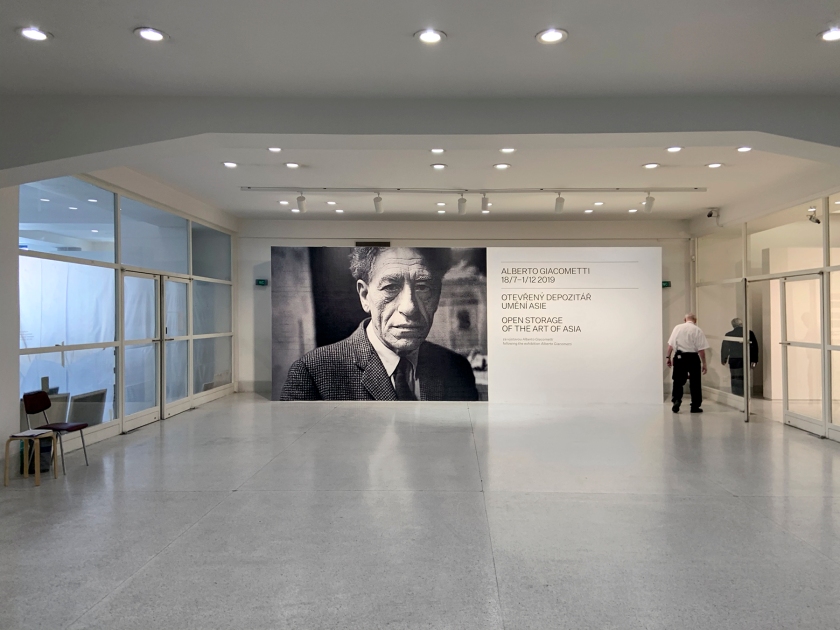











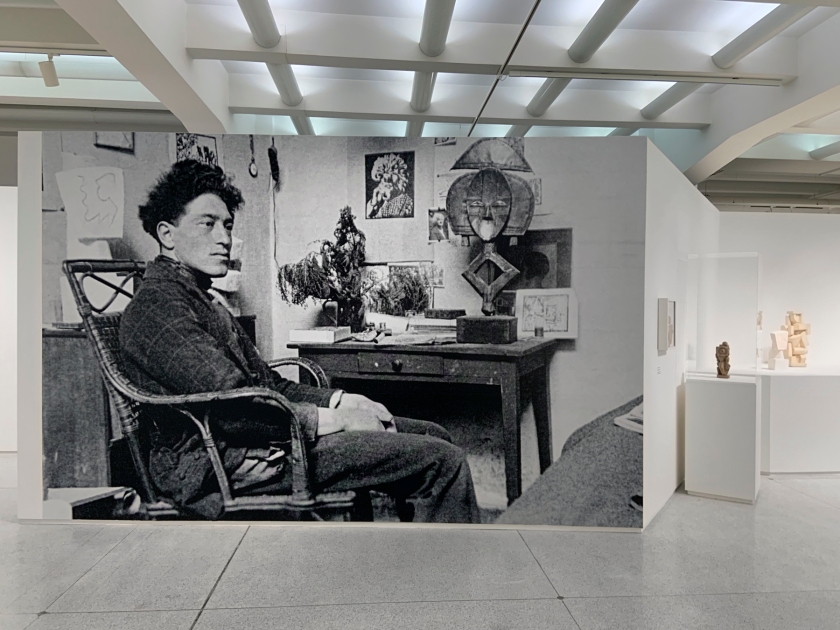





















































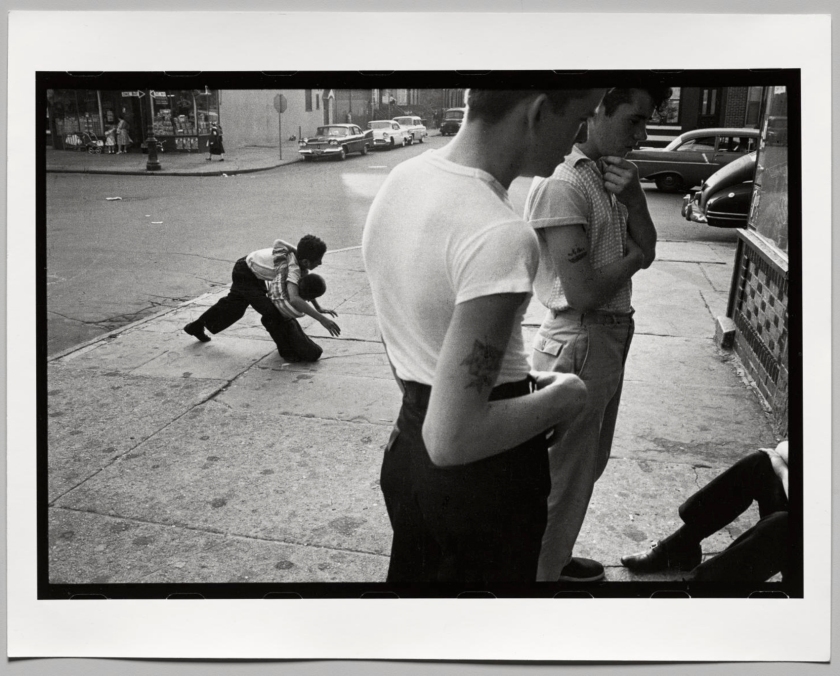




















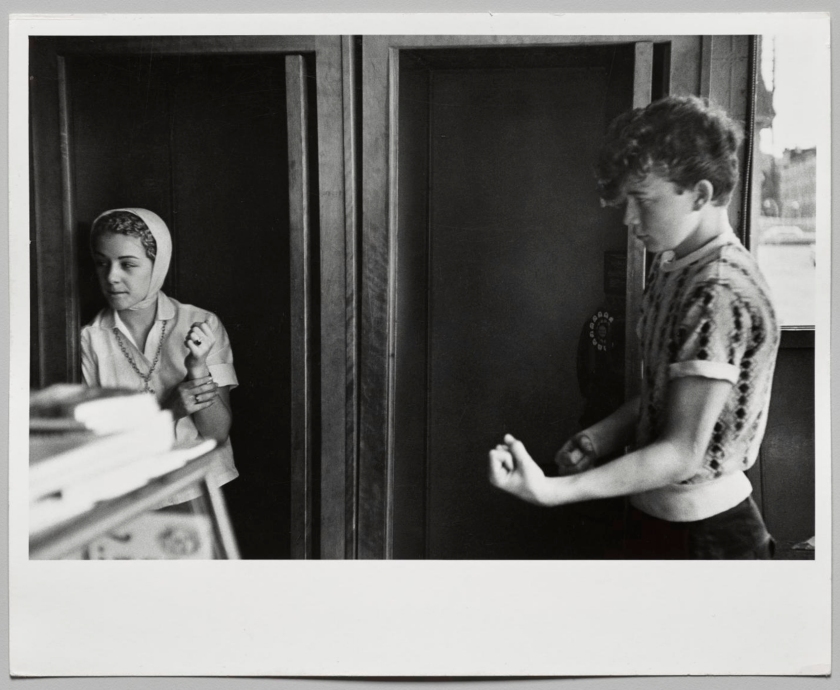

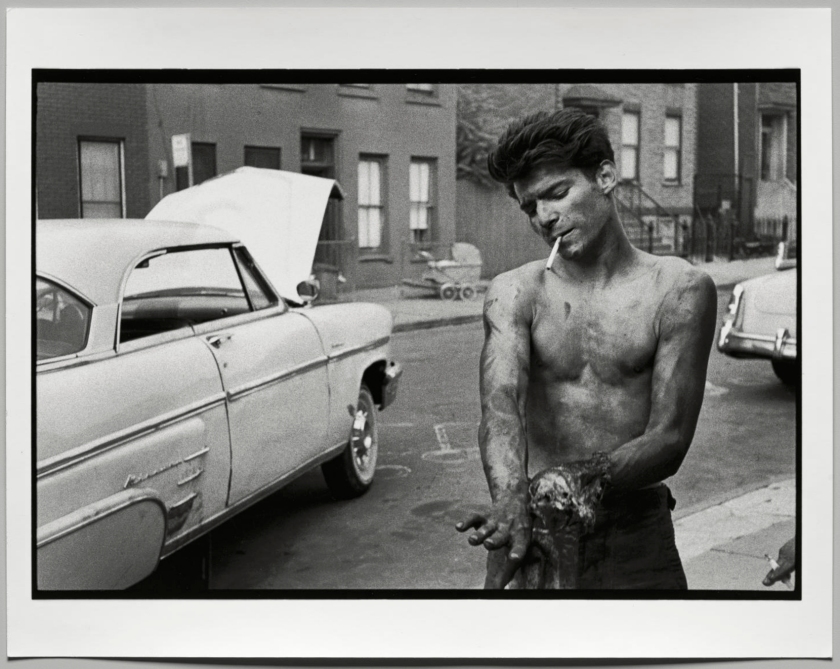









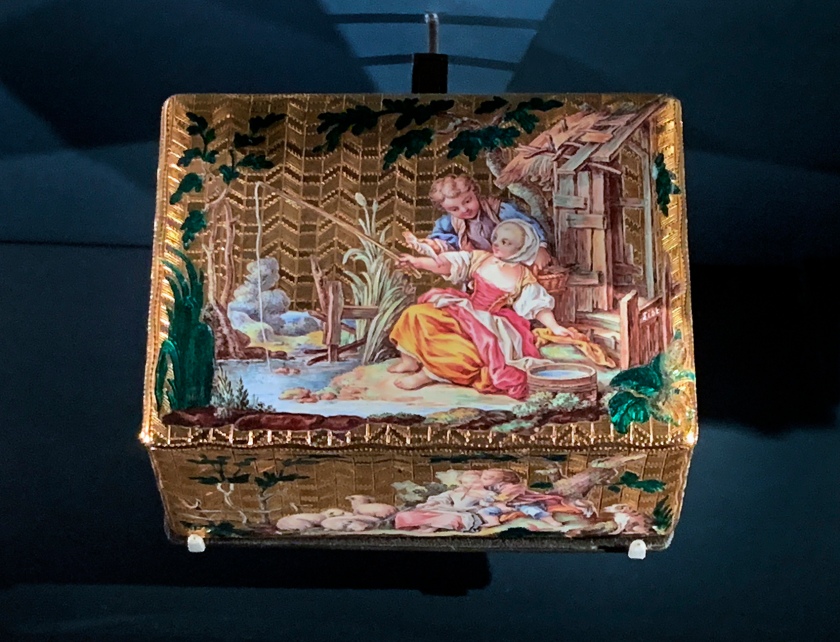








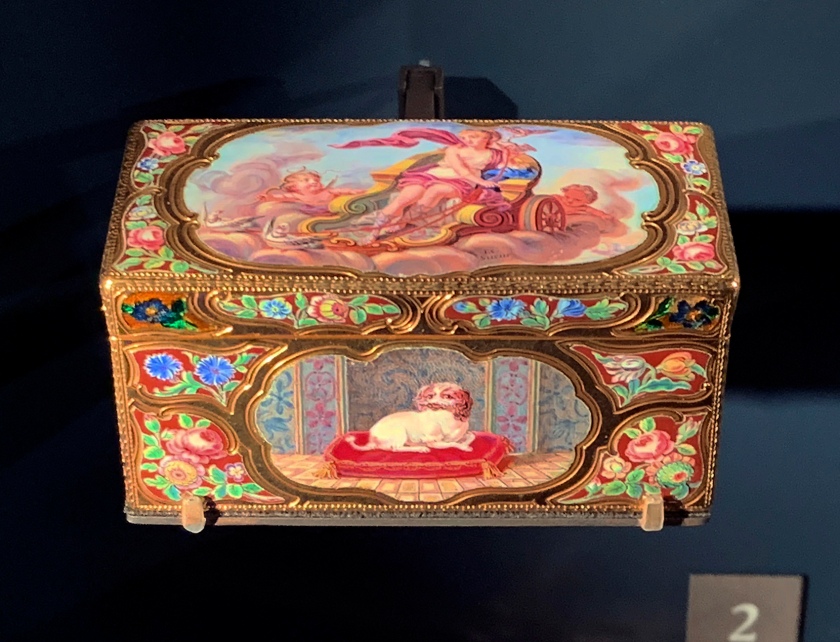






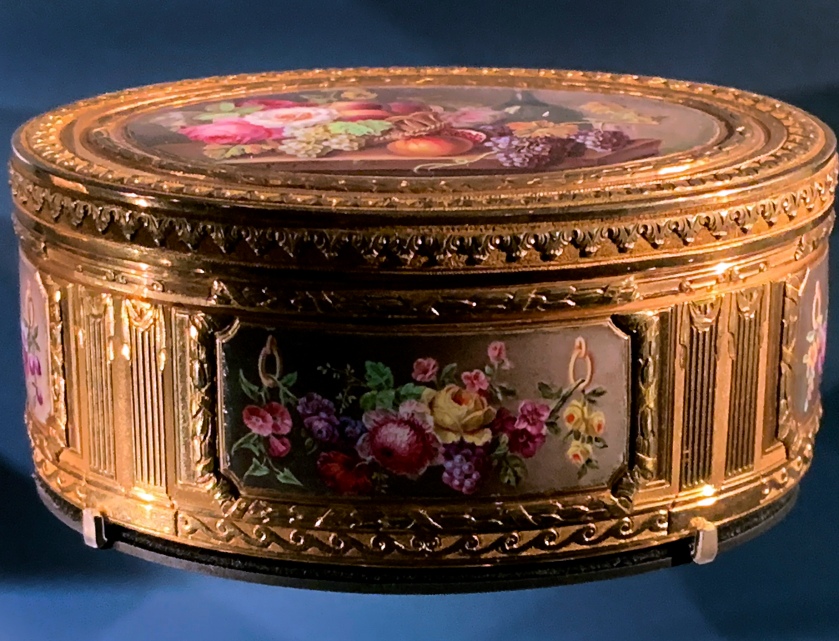

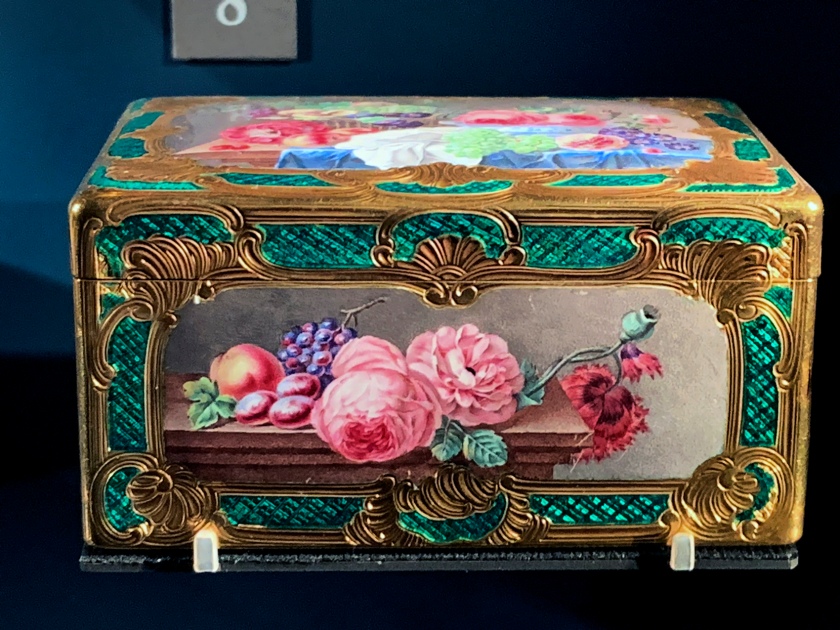

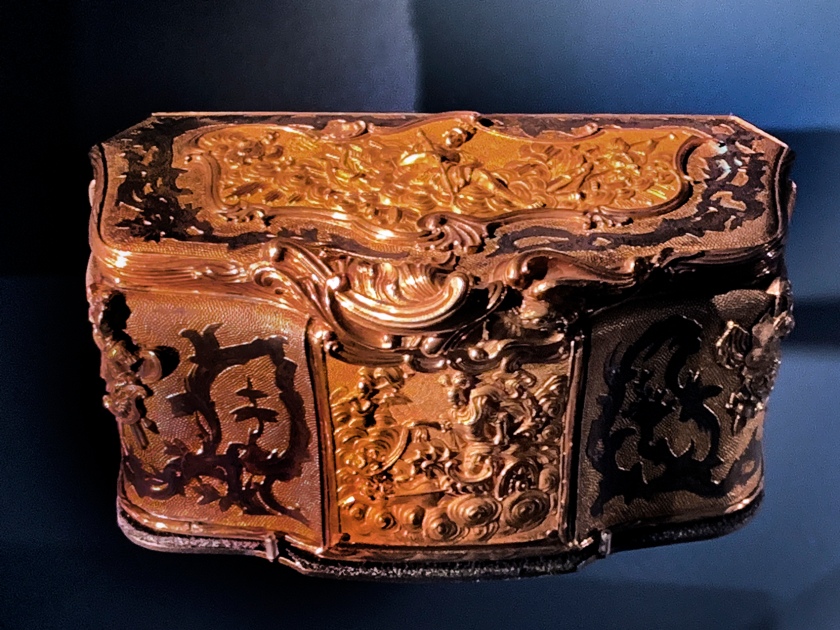









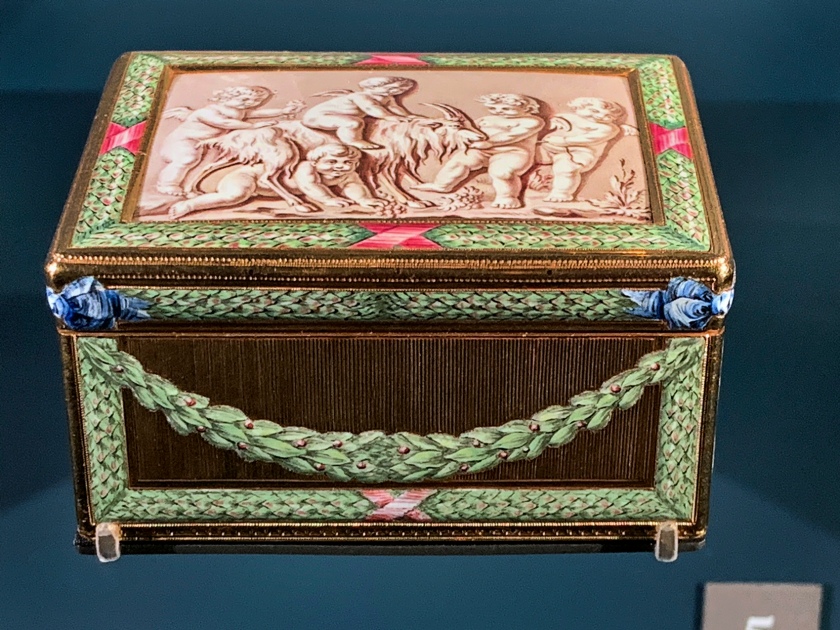









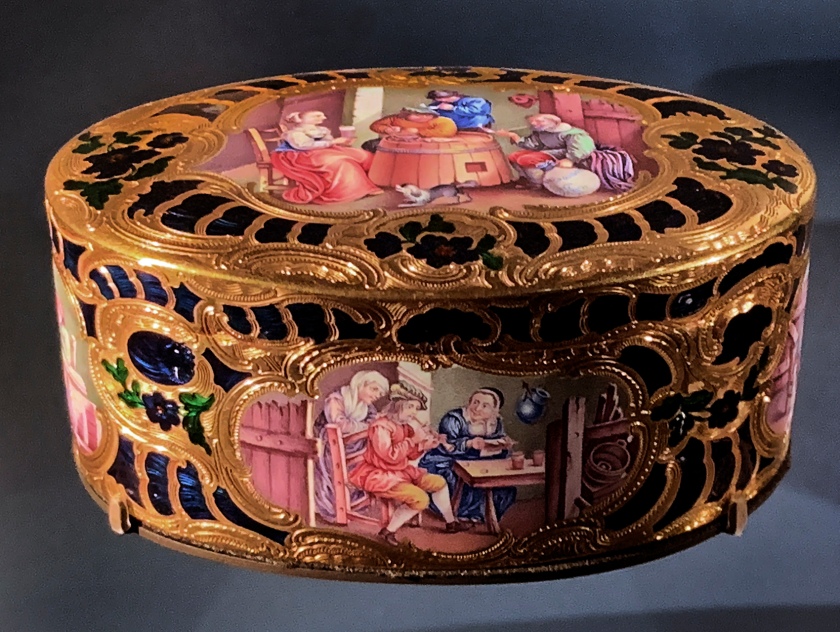






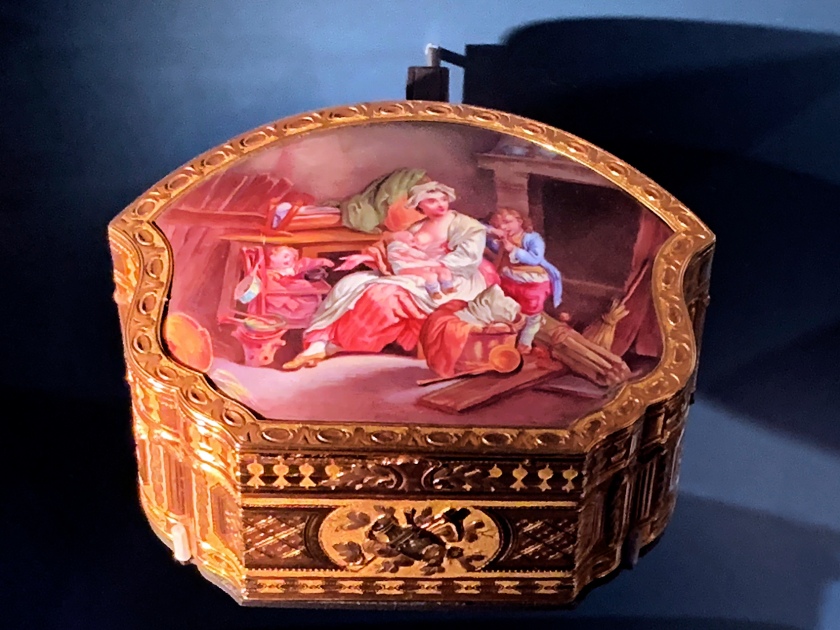







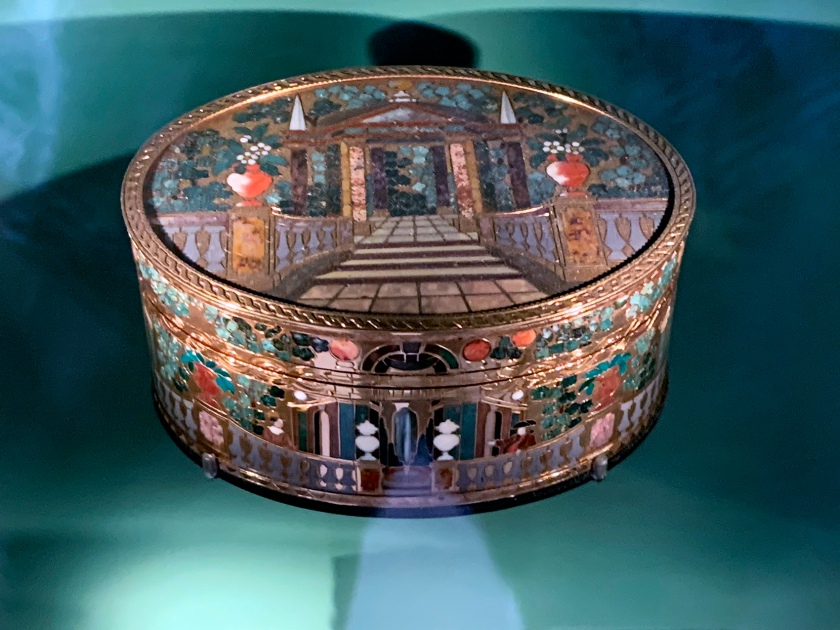



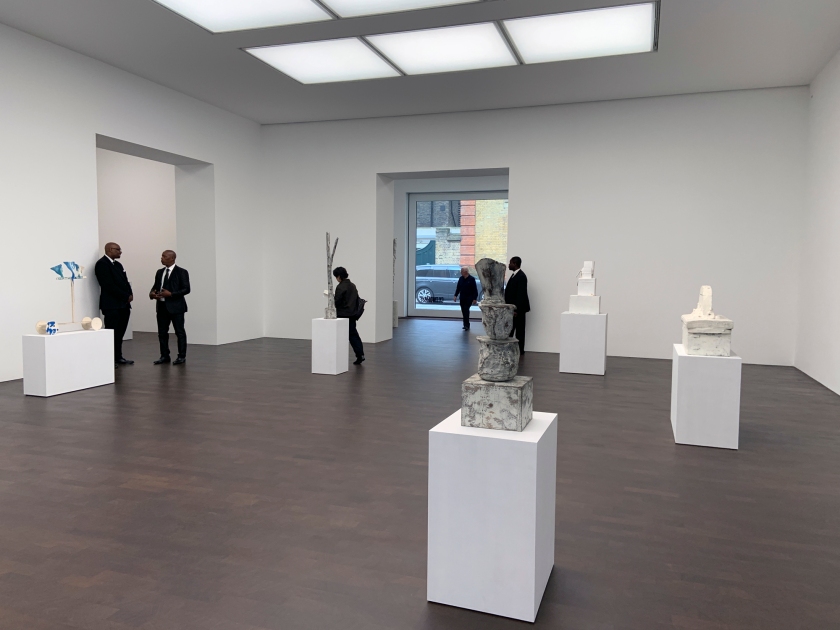











































































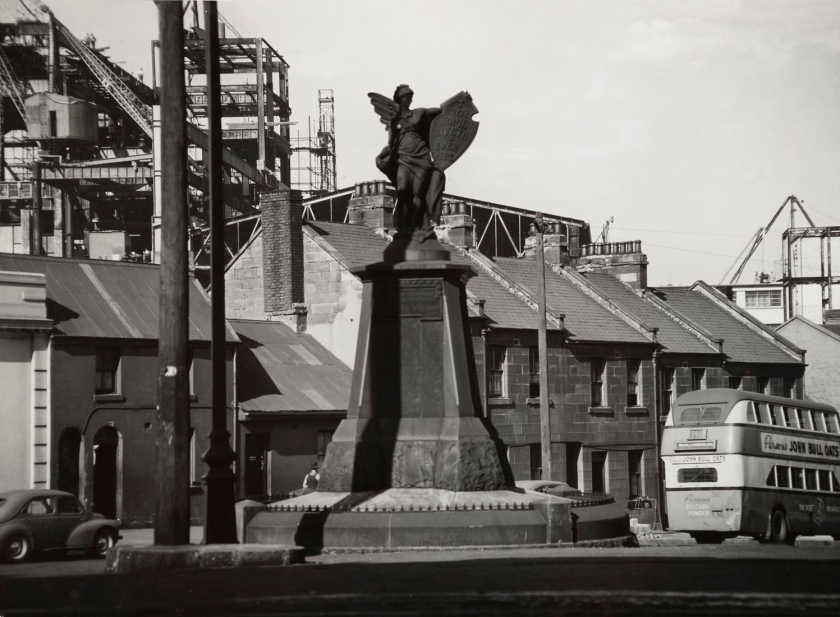














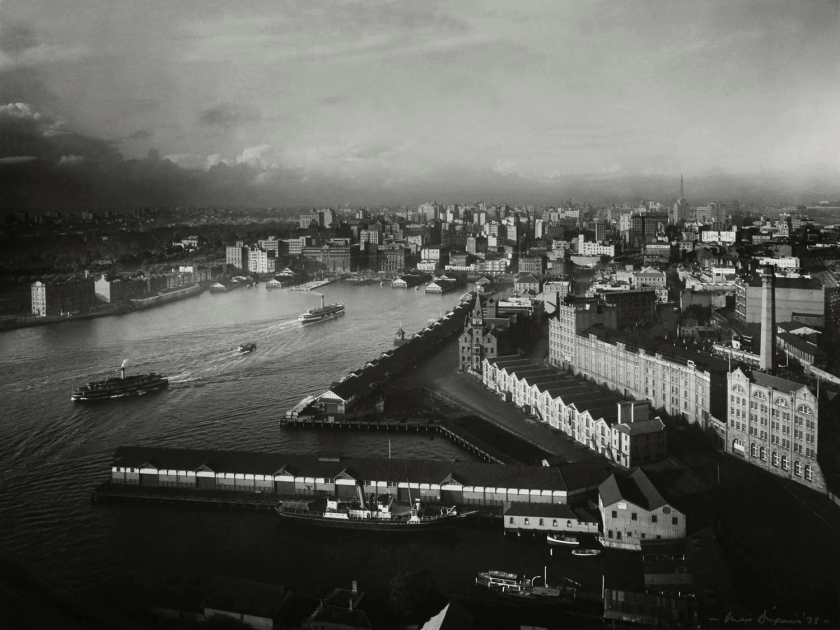





















You must be logged in to post a comment.